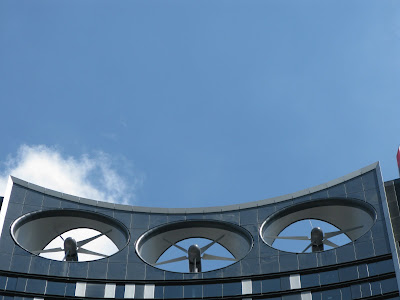High speed lifts sped me up to the top of the new Strata SE1 tower at Elephant and Castle.
At 147.9 metres (485 feet) and 43 storeys high, the £113.5 million Strata is slightly higher than the Barbican towers (below, as viewed from Strata), making it the tallest residential building in central London.
I hope you'll like the photos I've snapped of the stunning views of London offered from some of the most expensive of Strata's 408 apartments (Click on images to enlarge).
My visit was part of a magazine feature I'm writing about 'affordable housing' in low-income areas of London. So, I'll post more soon about Strata's external and internal (below) characteristics and my impressions of its impact on the Elephant and its people.
I'll just point out that Strata is the first development in the world where wind turbines are integrated within the building, according to Brookfield, its Toronto-based developer and builder.
Brookfield claim Strata's three five-blade turbines will contribute 8% of the building's total energy consumption.
Paul Coleman, London, June 2010
(Above): Strata SE1, photographed on June 22nd 2010 from the west side of Waterloo Bridge, from the point where I first caught sight of the tower being built in the winter of 2009.
Photos: Paul Coleman


















